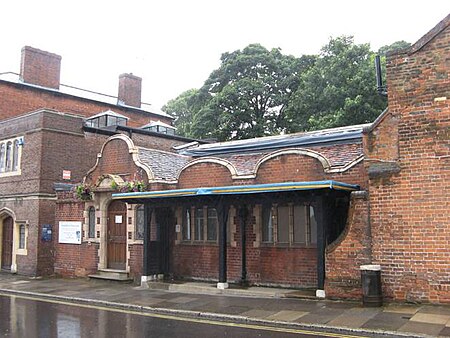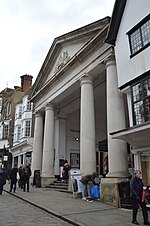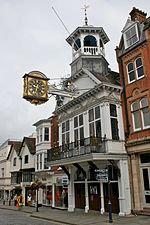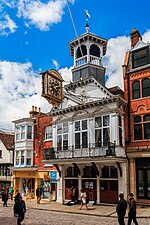Guildford Museum
Archaeological museums in EnglandArt museums and galleries in SurreyBuildings and structures in GuildfordGrade II* listed buildings in SurreyHistory of Surrey ... and 3 more
Local museums in SurreyMuseums in SurreyUse British English from June 2020

Guildford Museum is the main museum in the town of Guildford, Surrey, England. The museum is on Quarry Street, a narrow road lined by pre-1900 cottages running just off the pedestrianised High Street. This main site of the museum forms the gatehouse and annex of Guildford Castle, which the staff help to run. It is run by Guildford Borough Council and has free entry between 11am and 4:45pm on Monday to Saturday. It is closed on Sundays and on Christmas Day.
Excerpt from the Wikipedia article Guildford Museum (License: CC BY-SA 3.0, Authors, Images).Guildford Museum
Quarry Street,
Geographical coordinates (GPS) Address Website External links Nearby Places Show on map
Geographical coordinates (GPS)
| Latitude | Longitude |
|---|---|
| N 51.233839 ° | E -0.573502 ° |
Address
Guildford Museum
Quarry Street
GU1 3SX , Guildford Park
England, United Kingdom
Open on Google Maps











